System Analysis AndDesign Assignment: Online Student Enrolment Process For ABC University
Question
Task: Based on your responses to Assessment 1 – Written assessment, perform process and data modelling and develop and document a number of design diagrams using UML (including Context Diagram, Level 0 and Level 1 Data Flow Diagram, Entity Relationship Diagram).
Task 1:Create and document a Context Diagram for the System.
Task 2:Create and document a Level 0 Data Flow Diagram (DFD). The Level 0 DFD should contain all the major high-level processes of the System and how these processes are interrelated.
Task 3:Select three major and non-trivial processes from Level 0 DFD, decompose each of the processes into a more explicit Level 1 DFD.
Task 4:Using your own experience with similar online student enrolment systems and the information provided in the case study:
(i) Identify all the entities and their relationships in the System
(ii) Create and document an Entity Relationship Diagram (ERD) for the System.
Note: the case study has not and does not intend to provide a comprehensive description of entities in the System. You are expected to use your own experience with information systems in general and online student enrolment systems in particular to develop this ERD. Forexample, would Subject Name be an attribute for a Subject? Would Date of Birth be an attribute for Students?
Task 5: Should data be stored in files in a file system or in a database for the System? Justify your answer.
Task 6: Translate the ERD you developed in Task 4 into a physical relational database design. Document database tables and their relationship in MSWord file. Normalise your database design to the Third Normal Form (3NF)
Answer
Introduction
ABC University has decided to install a new system to their accounts which will replace the manual process of student enrolment (Referred to the Case study). The manual way of doing this is inefficient, time-consuming, and full of errors, which created an urgency of an online portal where the students will be able to enrol themselves, take classes and pay the tuition fee safe and securely through their desktops or smartphones. This report is made of different aspects like structure, diagrams, processes to construct this online system.
Task 1: Context Diagram
It is a type of diagram which facilitates the team to know the various parts of a system. It helps to identify the clarity of the boundaries of the system and work accordingly. It is known that in a single system, there will be enormous functions and modules, which creates the system by getting added up together. The input and output of each of these modules are contributed by the context diagram.
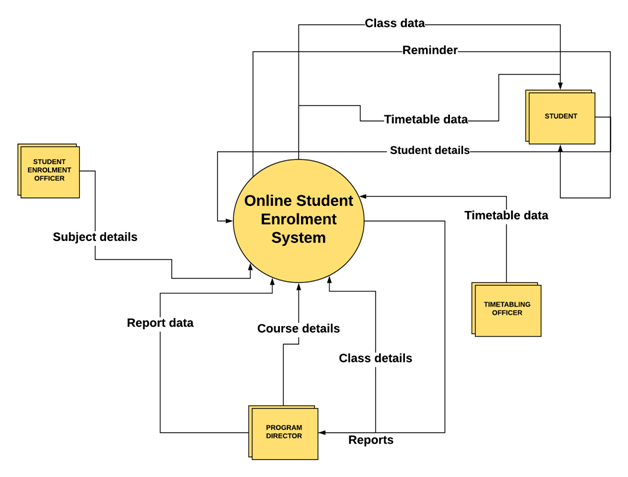
Task 2: Level - 0 Data Flow Diagram
Data flow is one of the major ingredients of this student enrolment system. There will be high data flow from one source to another. For that reason it is critical to maintain the precision of the flow. The primary goal of this system is to diminish the problems of manual enrolment which are data lost, data misplace and so on (Georgiou,Rizou & Spinellis,2019). A proper data flow diagram is exactly what is required here. It helps to manage data and its travel without making errors.
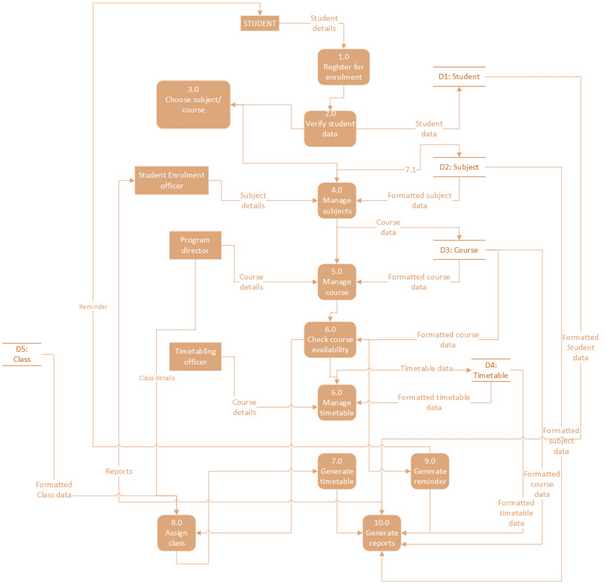
Task 3:
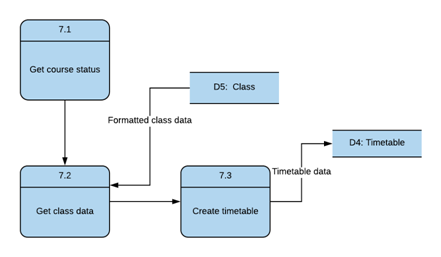
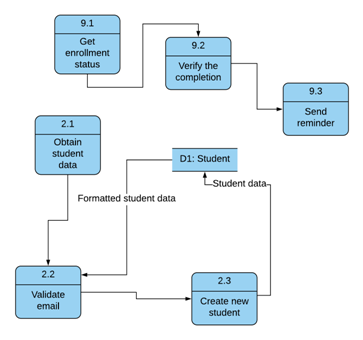
Task 4: ERD Diagram
The full form of ERD is the Entity Relationship Diagram (Chevers & Grant, 2017). It is a kind of diagram which displays the entities in a database and indicates the relation between the tables concerning the database. It is generally used to construct a good quality database and is essential for the same. The three elements are data, purpose, and the relation between those two.
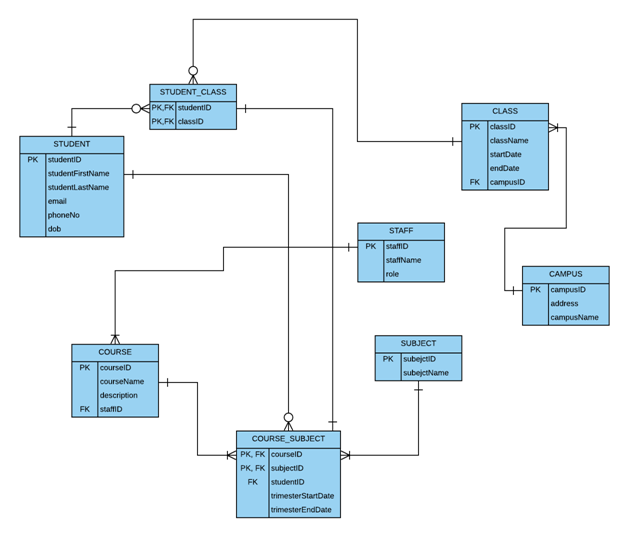
Task 5: Storing of data
Firstly, a database is generally used to store huge amounts of data, in a specific manner, more structured and in a well-defined format which makes the entire system more efficient and user friendly.
On the other hand, a file system is not as structured as a database is, and though it can store files very well but does not place them in such a way that it reduces the work of the users. This is very general and has less usage. Also, the storage requirement for keeping numerous file is should be large in order to prevent corrupt (Balijepally, DeHondt, Sugumaran& Nerur, 2017).
This is why it can be said that the database will be a better option to use for the student enrolment system. As it gives the operator better control over the enrolment process and the huge amount of defined data to be monitored. The file system is good for small, random, and disorganized data, but for a well-sized data with loads of variety and specifications can only be processed and stored in the database.
Task 6: Physical database
STUDENT
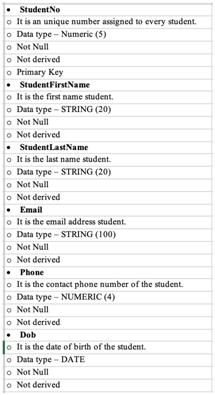
CLASS
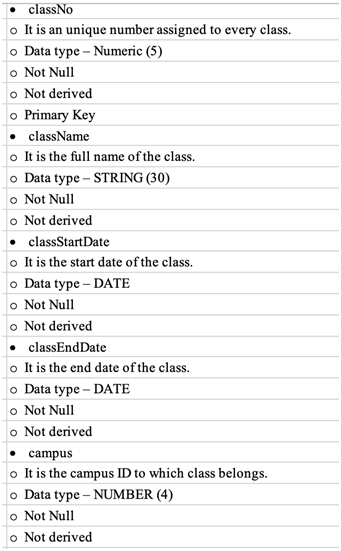
COURSE
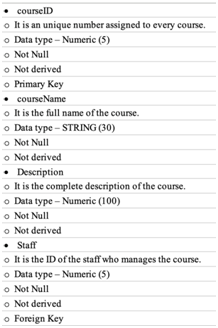
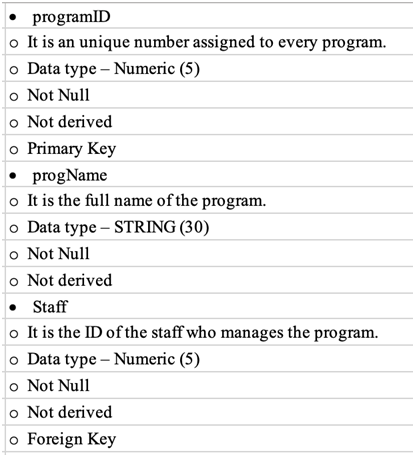
PROGRAM
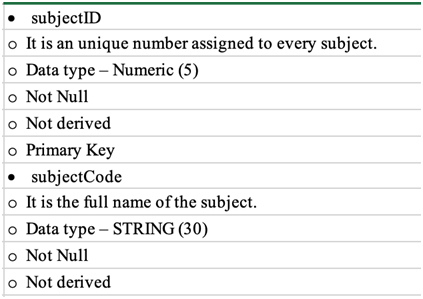
SUBJECT
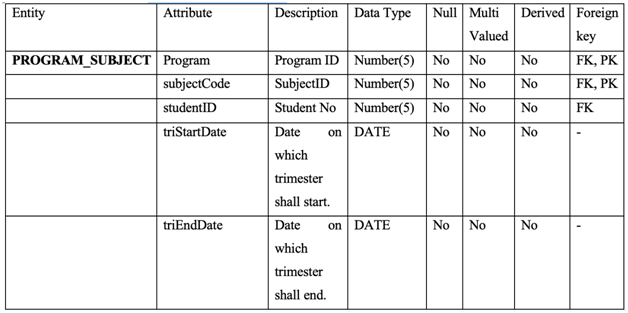
PROGRAM_SUBJECT
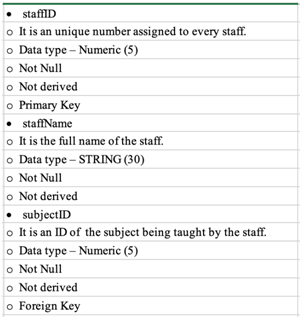
STAFF
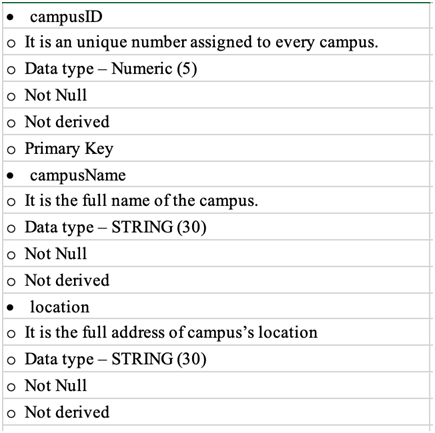
CAMPUS
Conclusion
ABC University has taken a great initiative of the online student enrolment process, this will solve a lot of their problems regarding fee-payment and classes at once (Referred to the case study). Though the University should be careful when it comes in executing the plan, as it is not so secured application, and can become the reason behind hassle of the students. As there are always chances of data leakage.
References
Balijepally, V., DeHondt, G., Sugumaran, V., & Nerur, S. (2017). Agility in Software Development and Project Value. Journal of Database Management, 28(4), 40–59. https://doi.org/10.4018/jdm.2017100103
Chevers, D. A., & Grant, G. G. (2017). Information Systems Quality and Success in Canadian Software Development Firms. Information Resources Management Journal, 30(3), 1–25. https://doi.org/10.4018/irmj.2017070101
Georgiou, S., Rizou, S., & Spinellis, D. (2019). Software Development Lifecycle for Energy Efficiency. ACM Computing Surveys, 52(4), 1–33. https://doi.org/10.1145/3337773












